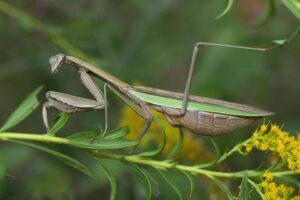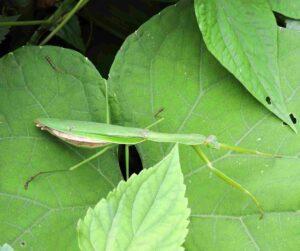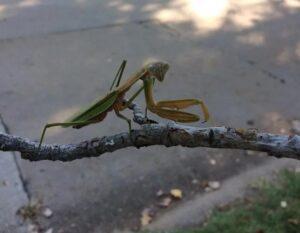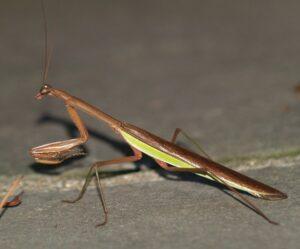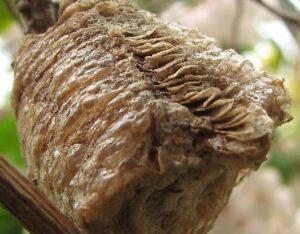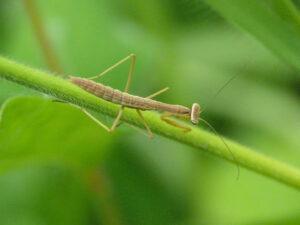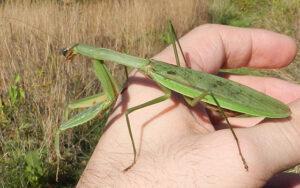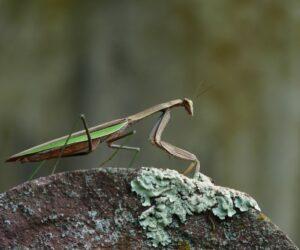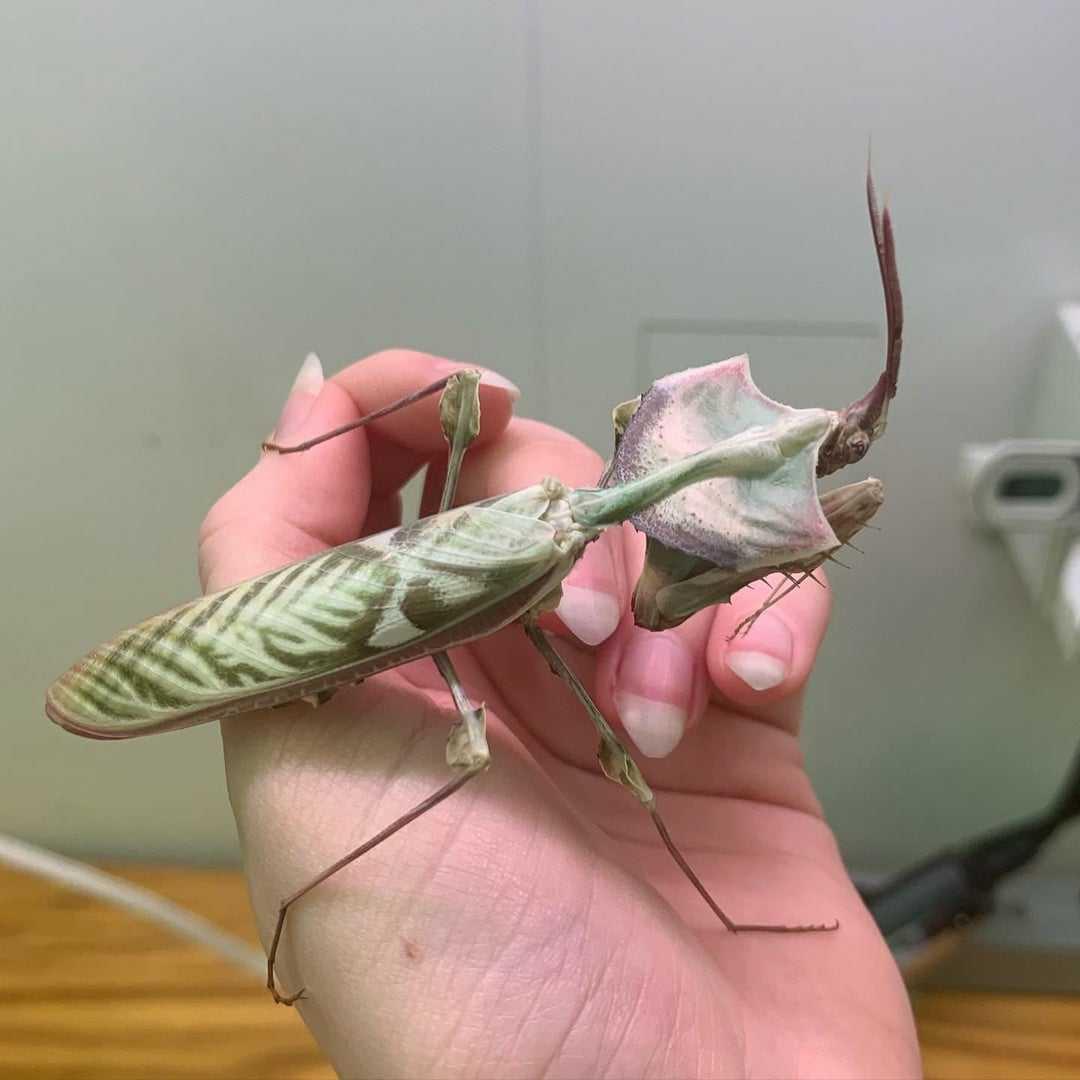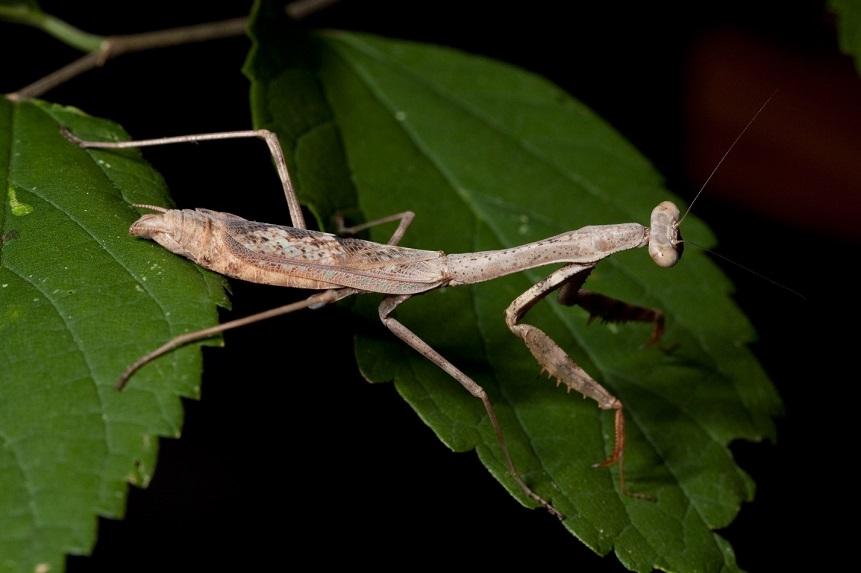Chinese Mantis (Tenodera sinensis)
Updated on
17/11/2022The Chinese mantis is a species of praying mantis endemic to Asia and neighboring islands. In 1896 it was accidentally introduced in the United States by a nurseryperson. It is an invasive and aggressive carnivore that can tackle and prey on larger insects.
Scientific Classification
- Class:Insecta
- Order:Mantodea
- Family:Mantidae
- Subfamily:Tenoderinae
- Tribe:Tenoderini
- Genus:Tenodera
Conservation Status
Description
Reaching lengths of up to 5-inches, this is the largest mantis species in North America. It is long and slender, with its color varying from brown to green. A brown individual has a green lateral stripe on the edges of the front wings. The eyes appear transparent in daylight, matching the color of the head, and black in low light.
Distribution: The native range isChina, Thailand, Japan, the Korean Peninsula, and Micronesia. It also lives all over the northeast United States.
Habitat: In or near vegetation surrounding houses as well as in pastures, grasslands, agricultural and open areas.
Do They Bite/Sting: Yes.
Lifespan: Around a year.
Predators: Other mantises, Asian green hornets, and birds. The females of the species specifically feed on the males. She often kills her male partner post-mating and eats him to provide nutrition to her offspring.
Behavior and Characteristics
Diet
The mantis chiefly eats other insects. Adult females sometimes prey on small vertebrates. Some examples of its food sources are spiders, hornets, katydids, grasshoppers, small amphibians, reptiles, and even hummingbirds. Like many mantids, this species is cannibalistic.
Life Cycle
1. Egg Stage
The semi-spherical oothecae (egg cases) are 0.8-inch (2 cm) in diameter and contain up to 400 eggs each. They are attached to vegetation like small trees and bushes at the end of summer. The eggs hatch in spring.
2. Nymph Stage
The first instar nymphs that feed less take a longer time to molt and are smaller than those who have eaten more.
3. Adult Stage
The males have longer antennae than the females. Their thorax and abdomen are slimmer too.
Comparison with Similar Species
European Mantis
The European mantis, Mantis religiosa, is smaller, having a size of 3-inches (7.5 cm). It is tan to green in color.
The Carolina mantis, Stagmomantis carolina, is even smaller, having a size of 2.5-inches (6 cm). It varies more in color and has a face plate that is more of a rectangle shape than a square as in the Chinese mantis. The latter’s egg case is much puffier than the slender, elongated one of the Carolina mantis.
Care Sheet
Enclosure size: The terrarium should be roughly 3 times the size of the insect. It should be well-ventilated.
Substrate: Bioactive soil with isopods, springtails, beneficial fungi and bacteria of 1-2-inches thickness.
Temperature: 68-100°F (20-38°C) is ideal for the pet.
Humidity: 60-65% is preferred.The enclosure should be gently misted regularly as it is the source of water for the mantis.
Feeding: It can be fed moths, cockroaches, grasshoppers, butterflies, and crickets. In the first instar, they can be given fruit flies as food, gradually transitioning to house flies, blue bottle flies, and small roaches as they grow bigger.
Source
i.pinimg.com, bugguide.net, mdc.mo.gov, animaldiversity.org, projectnoah.org, inaturalist.ca




